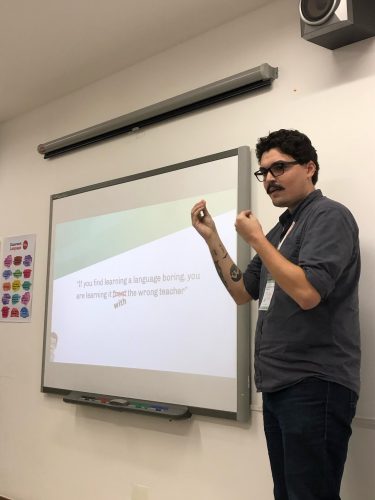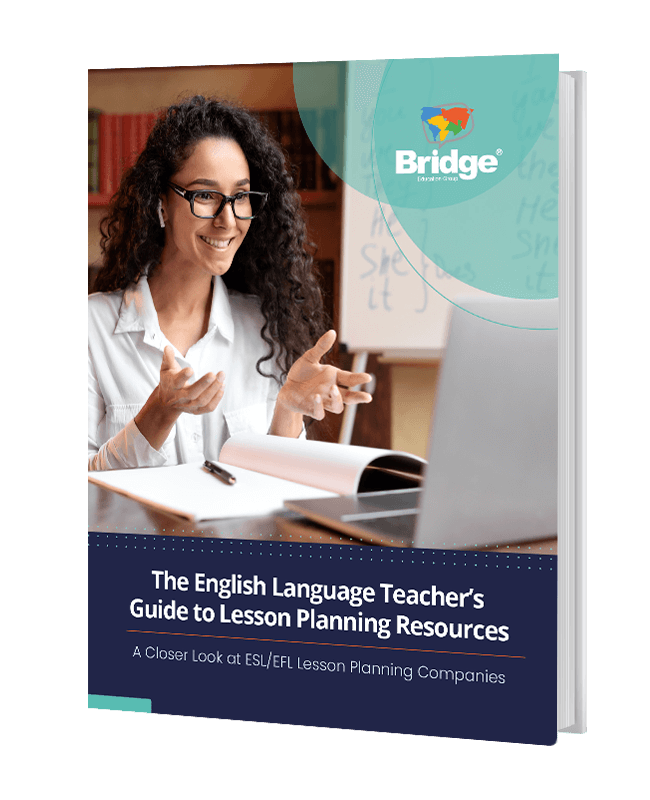When it comes to learning nouns, verbs, and tenses, it’s not uncommon for many English students to yawn at the thought of sitting through grammar drills and filling out worksheets. Sure, dealing with lots of rules may not seem that exciting, but you can always turn any class from mundane to fun! Let’s look at some ways to keep your ESL learners on their toes during grammar class, as well as some examples of ESL grammar activities that you can use to spice up your classroom.
Why do some students and teachers find grammar lessons boring?
While there’s no doubt that mastering grammar is key to English fluency, students may sometimes perceive grammar lessons as monotonous or unappealing. It could also be challenging for teachers to make learners enjoy practicing their past participles, prepositions, and conditionals. More often than not, these challenges occur because:
-
Students may not see the need to learn English grammar. While in class, they see their grammar activities as tasks that they only have to complete, without realizing how useful grammar is for their communication skills.
-
Through the years, teachers have become comfortable with explaining grammar rules and having students practice through drills and exercises taken from textbooks. Although these have been proven effective for learning a new language, learners tend to get bored with the same methods after some time.
Want to learn more? Read this next: How to Teach English Grammar – Even if You’re Terrible at It!

How can I make grammar fun?
Knowing why students don’t get enthusiastic about grammar lessons gives English teachers a chance to revamp their instruction, and they can do so by making their classes interesting, interactive, and inclusive. But what do these characteristics mean, exactly? Let’s dive into each component.
Make grammar interesting
Creating interesting grammar lessons boils down to making your learners see the social relevance of the concepts they’re studying. So, rather than simply making students construct sentences and choose the correct word forms, help them grasp grammar better by teaching them how to use it in the real world.
When learning past tenses, for instance, students can practice by talking about their memories or asking each other about their travel experiences. This way, they not only apply the grammar rules but also see how they can use past forms to describe events in their lives and exchange information with others.
Find the materials that will benefit your students the most with the free
ESL Teacher’s Guide to Lesson Planning Resources
downloadMake grammar interactive
Keep your English students engaged with your grammar lessons by spicing them up with a variety of activities that get students actively involved. Don’t just stick to filling out worksheets – go for ESL grammar games, tasks, or challenges that make students talk more, listen carefully, and even get their creative juices flowing! Also, don’t forget to make use of digital tools like interactive whiteboards and quiz makers to make your activities even more interactive.
Additionally, make sure that the TEFL speaking activities you’re incorporating into your grammar lessons will help students use grammar in their daily lives. For instance, you can do role-play activities, improvisation exercises, mock interviews, and practice dialogues that incorporate what students usually do at work or school.
Check out more strategies for teaching grammar to English language learners.
Make grammar inclusive
Boost your learners’ participation through materials and activities in which your students see themselves, their cultures, and their backgrounds represented. Instead of basing your grammar lesson examples on one type of person, you can draw inspiration from people with different social, cultural, and even economic backgrounds.
For instance, if you’re role-playing job interviews, don’t just stick to the most common professions. Instead, practice for other types of positions or jobs in other industries, too. By using a variety of representations in your classes, you not only promote diversity but also make grammar learning more relatable and significant for your learners.
Below is a video recap of how to make English grammar lessons interesting, interactive, and inclusive:
What are some activities to teach ESL grammar?
Now that you know how you can make grammar lesson plans more exciting, here are some grammar activities for ESL students that you can incorporate into your classes based on the types of learners you have. Depending on the grammar topics you’re teaching, you can also tailor their content or change the mechanics of the ESL grammar games as you see fit.
ESL grammar activities for beginners
Picture description
What you’ll need
-
Various photographs of people doing different actions (e.g., eating, dancing) on separate slides. You can use PowerPoint, Google Slides, or Canva to create your slideshow.
How it works
In this activity, students will practice making sentences using the present continuous tense.
Show the photo to the students and ask, “What are they doing?” You can ask follow-up questions like “Where is he going?” or “Why do you think he is laughing?”
Variation
Aside from having learners describe the photo, you can also ask them to create a story, make assumptions, or come up with predictions based on what they see in the pictures.
Battleship
What you’ll need
-
Printed copies of the Battleship game worksheet on iSLCollective.com.
-
For online classes, you can copy the template on a Miro or Zoom whiteboard and send a link to individual students.
How it works
In this battleship game, students will practice asking and answering questions using the modal “can.”
Divide the students into pairs and give each student a battleship game card. Then, have each of them draw a battleship on the card. The battleship should be linear and cover between 2 to 5 boxes. They can draw the battleship vertically, horizontally, or diagonally.
Student A asks their classmate (Student B) a question using “Can you…?” plus any subject and verb on the card. If Student B says “no,” Student A marks his own card with an X to indicate a miss. If Student B answers “yes,” Student A draws a check mark on his own card to indicate a hit.
Students take turns asking and responding to questions until one of them hits all the squares covered by their classmate’s battleship.
Variation
Aside from modals, students can also practice with other grammar tenses and vary the subjects and verbs on the cards.

ESL grammar activities for teens and adults
Sentence makers
What you’ll need
-
A board and a marker.
-
For online classes, you can use the Timeline virtual board on Padlet or another virtual whiteboard.
How it works
In this activity, students will practice making sentences using the past perfect tense.
Write a sentence in the past tense (e.g., I went to the park). Then, have students add five more past tense sentences.
When everyone has added their sentence, instruct the students to create a sentence in the past perfect tense by making different combinations of the events on the timeline (e.g., They had eaten before I went to the park). Check that the order of events on the timeline is correct.
Variation
You can also use the timeline to practice the present and future tenses. Alternatively, you can challenge the class to create a story based on the information on the timeline.
Qualify for more jobs and advance your skills with
Specialized Certification in Teaching Young Learners & Teens
Get CertifiedSpeculation
What you’ll need
-
A whiteboard and a pen.
-
For online classes, you can use a virtual whiteboard like Miro or the interactive whiteboards on Zoom.
How it works
In this activity, students will practice using expressions with “since” and “for” with the present perfect tense.
Divide the students into pairs. On the board, write “I think you…” Next, tell students that they’ll guess information about their classmates by making present perfect tense sentences with “since” and “for.” You can model this activity by guessing something about one of the students (e.g., “I think you haven’t been to the cinema in a month.”) Then, the student confirms if the statement is correct or not.
Students take turns making sentences and confirming each other’s statements. Encourage them to ask follow-up questions to extend the conversation.
Variation
Students can also make guesses about their classmates’ past experiences, plans, and habits.
Though getting ESL students thrilled about grammar classes may seem tough to pull off at first, it is possible to change their perception about studying sentence rules, parts of speech, and many other elements. By spicing up your lessons and making them relevant to your learners, you can give them the best English grammar learning experience and help them level up their English in no time.













